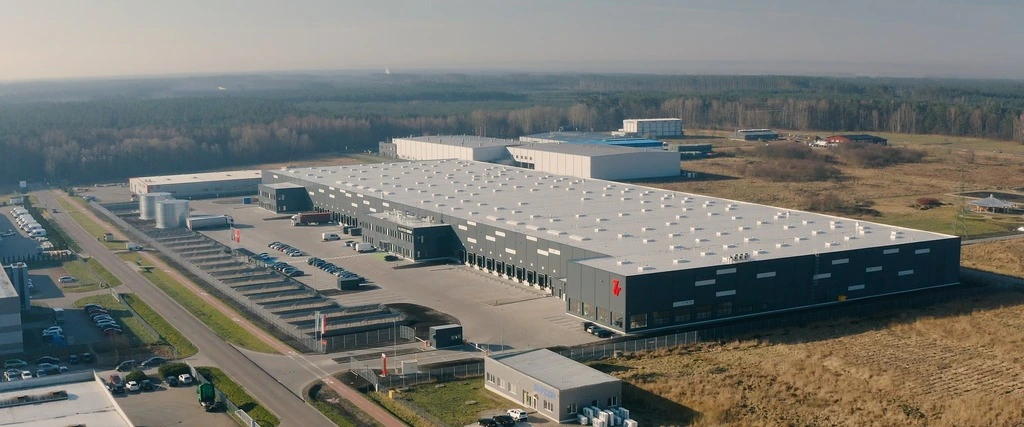
The purpose of implementing a real-time localization system, based on RFID technology, at the 7R Logistic Center Kraków-Kokotów was to enable rapid localization of each tagged pallet, as well as the ability to automatically perform an inventory. The main expectation for the use of RFID was the complete automation of processes related to pallet identification and inventory taking. The system makes it possible to locate pallets and forklifts in the racking area with accuracy to the rack in the aisle. Objects entering/exiting through controlled gates are identified with accuracy to the gate and direction of movement.
All pallets received at the warehouse are tagged with RFID tags at the very beginning. Then the pallets, according to instructions from the warehouse system, are distributed to the appropriate storage locations. Information about the place where the pallet was put away is automatically transmitted from the RFID system to the warehouse system. Each time a pallet is moved in the warehouse again , the new location of the pallet is automatically registered by the RFID system. This data is then transferred to the warehouse system. All forklifts are permanently marked with RFID tags, which makes it possible to track them in the warehouse area also on the basis of readings from the RFID system. The RFID system covers the location with pinpoint accuracy:
Given the need to cover the entire facility with RFID and the requirements for localization accuracy, it was decided to implement an RTLS system that determines the coordinates of an object tagged with an RFID tag (label). The only economically viable solution, given the assumed tagging of all pallets, was to use a passive RTLS system. The system implemented is the STAR system from Mojix. It is a solution that operates in the UHF frequency range and complies with the EPC Classl Gen2 standard common in logistics. This approach made it possible to use relatively low-cost passive labels. This is important given the large volume of RFID labels (the warehouse has a capacity of more than 17,000 pallet locations) and the lack of reusability. The STAR system is based on a single read point (STAR reader) that controls hundreds of antennas, so it offers flexibility to respond to the needs of a single or multiple concurrent business processes and allows going beyond conventional, isolated read points with their limited read distance. In the STAR system, the antennas serve only the function of feeding the RFID tags, while the readings are performed by the STAR reader. The uniqueness of the STAR receiver lies in its ability to read extremely weak signals in a huge space. The most significant advantages of the system are:
The Mojix system consists of the following components:
An integral part of the implemented solution is a vision system (cameras), which makes it possible to detect movement in designated areas. Based on the detected movement, the RFID system activates specific RFID antennas, which feed the tag. Due to the large number of antennas in the system, the read cycle using all antennas becomes longer. In this case, it was necessary to use cameras as a tool to signal which antennas should be triggered immediately to register object movements. The camera system also offers additional functionality to support RFID readings. This functionality is the determination of the direction of movement of a detected object. This makes it possible to improve the accuracy of object localization. The main component of the solution is the STAR system controller and the software responsible for determining the location of the RFID tag based on its readings. The controller is connected to two other systems. These are a visualization system for graphical representation of the warehouse and the 7RWEB warehouse system. From the controller to the warehouse system, information about pallet reloads is sent. The warehouse system updates the inventory. Based on information from the warehouse system, it is possible to find a pallet with the indicated SSCC number in the visualization system and find it on the three-dimensional map of the warehouse. In turn, information about the location of the trucks is sent to the visualization system directly from the RTLS system. A real-time visualization system reflects the location of each cart. In addition to ongoing recording, the system also has the ability to perform on-demand inventory. Inventory is a standard mobile system for quickly taking an inventory of fixed assets at any location of the enterprise and tracking and protecting valuable equipment. The main realized goal of the system is to minimize the time of inventory taking and the amount of accompanying paper documents to the necessary minimum. The system works in a distributed form on mobile RFID readers, under the control of Windows. It cooperates with any FK system.